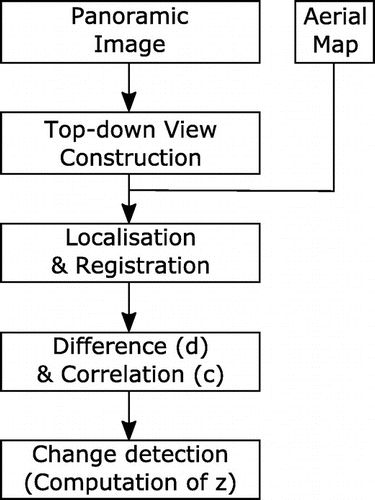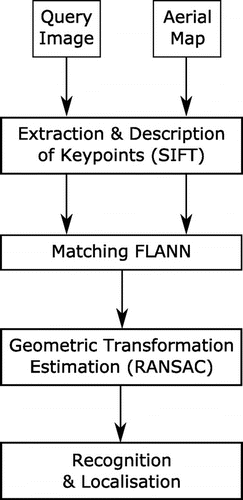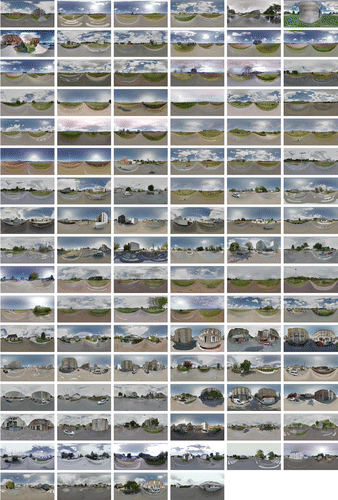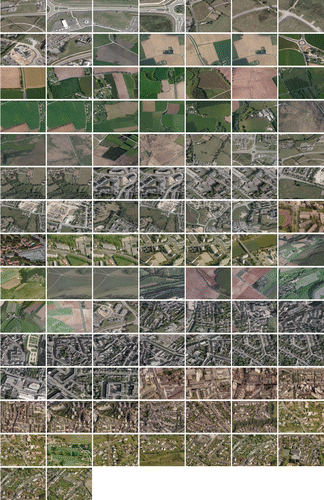Figures & data
Figure 1. Aerial map from Bing Maps© with blue rectangles highlighting zones that have been recently transformed.
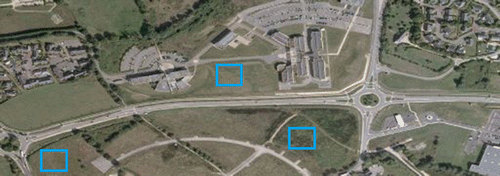
Figure 5. Example of top-down view localization in the aerial image. The top-down view T (a) is compared with the large aerial image A (b), and the green area denotes the found localization of T.
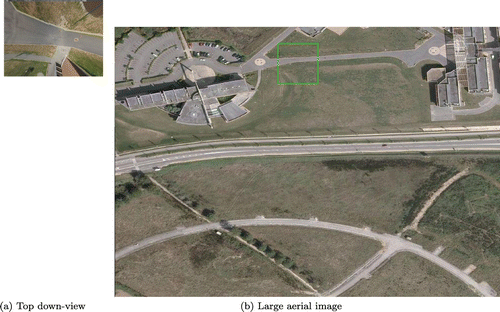
Figure 8. Artifacts brought by built-up structures (from top to bottom): missed changed, false changes due to other structured objects, false changes due to deformation brought by top-down view. For each line are given (from left to right): ground panorama, top-down view, and corresponding aerial image.

Table 1. Confusion matrix for the changed/unchanged classification.
Table 2. Confusion matrix for the unchanged/changed/structured classification.
Table 3. Computational complexity of the different steps composing our proposed approach. CPU times have been averaged among 100 runs.

